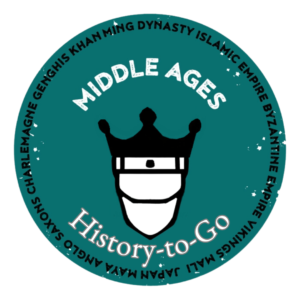Hands-On Ancient History Lessons: History to Go (Wholesale)
From: $55.50
Looking for an easy, hands-on ancient history lesson for your group?
We’ve done the work for you with Ancient History-to-Go kits.
History to Go kits are the perfect accompaniment to your history teacher’s lesson plan! Let us bring that extra level of beautiful, engaging, hands on learning to your classroom, co-op, or special event.
Each kit has everything you need for students K-12 to dive deeper into history. Over 60 historically enriching crafts that have been selected for quality, authenticity, and ease of use are packed into ready-to-pass-out kits for your classroom. A historical topic overview related to the activity is included along with directions and all the supplies are right there in the kit. Just open and go! We’ve done the legwork, assembly, research, and sourcing to make hands-on history easy to add to your school so your teachers can do what they do best: teach!
Our hands-on ancient history lessons will take you through eighteen fascinating civilizations across the Americas, Asia, Africa, Europe, and Australia. Discover the art of the boomerang with authentic throwing stick crafted by an Aboriginal family business. Mummify an apple in the style of the ancient Egyptians. Recreate historic artifacts like mosaics, hats, and more. Play like the ancients with Senet, one of the oldest board games in the world. Each lesson brings the ancient world to life with a multi-sensory approach.
Perfect for:
Busy Teachers
Sensory Learners
Charter School Classes
History Clubs
Greek Festivals
Indigenous People’s Day
Colonial Day
Classical or STEAM Co-ops
Library Programs & Reading Prizes
Museum Programs & Gift Shops
Minimum order: 5 of the same item, minimum of 15 total items. Orders that don’t meet the minimum requirements will not be processed.
Description
Our hands-on ancient history lessons include 1 activity and 1 booklet containing background historical information and activity directions.
Our ancient history hands-on kits include:
- Cave Art (Aboriginal Australia)
- Kite Painting (China)
- Mummification (Egypt)
- Cylinder Seal (Mesopotamia)
- Purple Dye Kit (Phoenicia)
- Senet Game Kit (Egypt)
- Weaving Kit (Ghana)
- Geometric Solids Mobile (Athens, Greece)
- Rope Pottery (Jomon Japan)
- Rangoli (India)
- Anansi Stories and Story Dice (Ghana)
- “Jade” Mask (Olmec)
- Latin Card Game (Rome)
- Mosaic Kit (Pompeii)
- Oil Lamp Kit (Israelites)
- Horn Trumpet (Israelites)
- Bird Whistle (India)
- Wool Hat (Scythians/Ancient Russia)
- Laurel Wreath (Rome)
- Wax Tablet Kit (Pompeii)
- Papyrus Making Kit (Phoenicia and Egypt)
- Papyrus Scroll Painting Set (Egypt)
- Gold Leaf Kit (Scythians/Ancient Russia)
- Soap Making (Babylon/Mesopotamia)
- Incense (India)
- Shadow Candle (Athens, Greece)
- Cuneiform Cookie Kit (Mesopotamia)
- Magnetic Compass Kit (China)
Order your hands-on ancient history lessons today for an immersive way to explore world cultures and historical innovations. Perfect for classrooms, libraries, museum gift shops, and educational programs, these kits provide a creative, interactive approach to history, encouraging students to connect with the past through hands-on activities.
Each kit is designed to bring history to life, offering a multi-sensory experience that meets curriculum goals while sparking curiosity and critical thinking. Students can explore art, science, storytelling, and daily life from cultures around the globe, making connections across time and geography. From ancient innovations to timeless traditions, these kits allow learners to step into the shoes of people from the past and gain a deeper appreciation of human creativity and resilience.
Aligned with many educational standards, our kits are ideal for cross-curricular learning, integrating history, art, and STEM concepts in a way that inspires students and supports educators. Whether used in the classroom, at community events, or as unique gift shop items, they provide an unforgettable, hands-on experience for learners of all ages.
Transform the way your students or patrons engage with history—these kits make it personal, tangible, and exciting. Let’s make history unforgettable—one project at a time!



